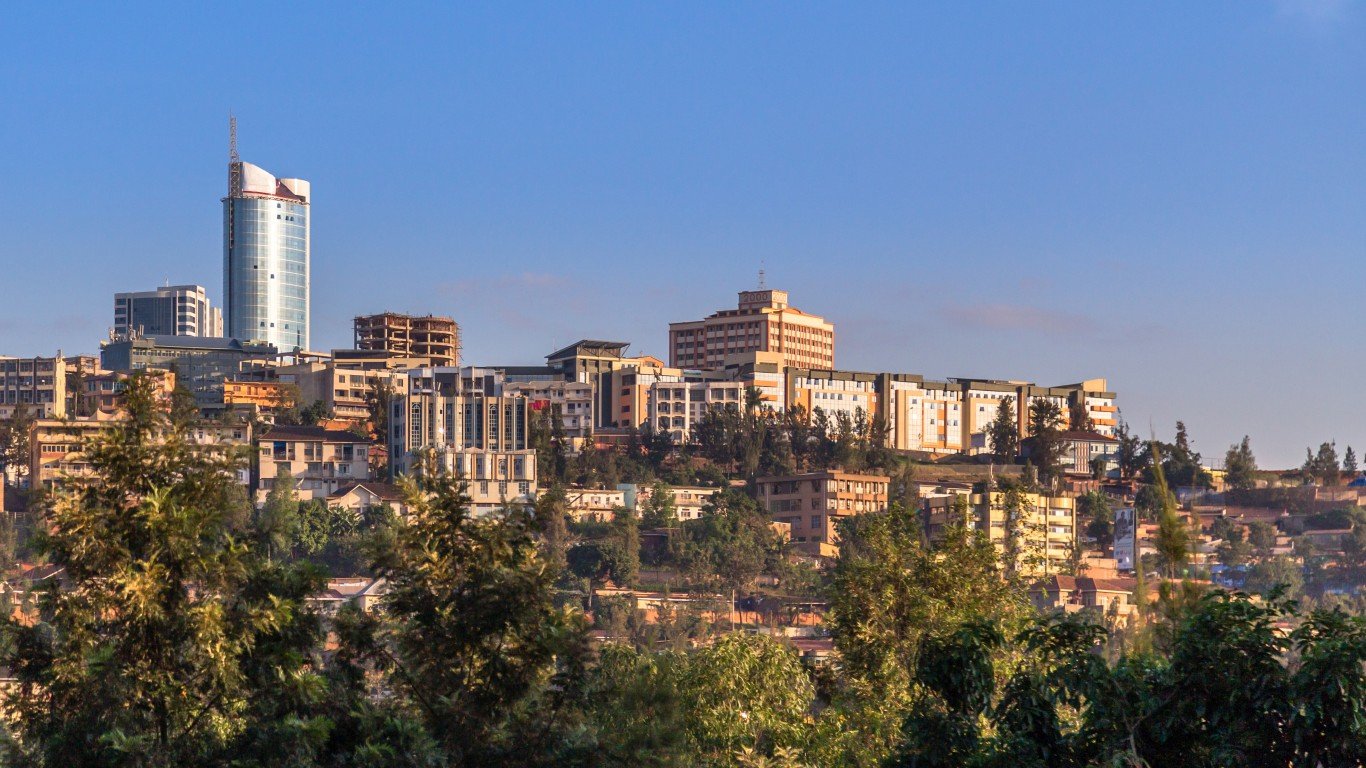
22. Rwanda
> GNI per capita, 2021: $2,410
> GDP, 2021: $11.07 billion (#66 lowest of 214 countries)
> Avg. life expectancy at birth, 2021: 66.1 years (#52 lowest of 194 countries)
> Population growth, 2023 est.: 1.7% (#54 highest of 237 countries)
> Population, 2021: 13,461,888
Rwanda, a landlocked country in east-central Africa, has made significant progress in health care and other areas since the 1994 genocide against the Tutsi. Still, its economy is based mostly on agriculture, though tourism was a growing sector before the COVID-19 pandemic. With a myriad of environmental concerns, Rwanda has taken a proactive approach to improve its environment and climate change issues.
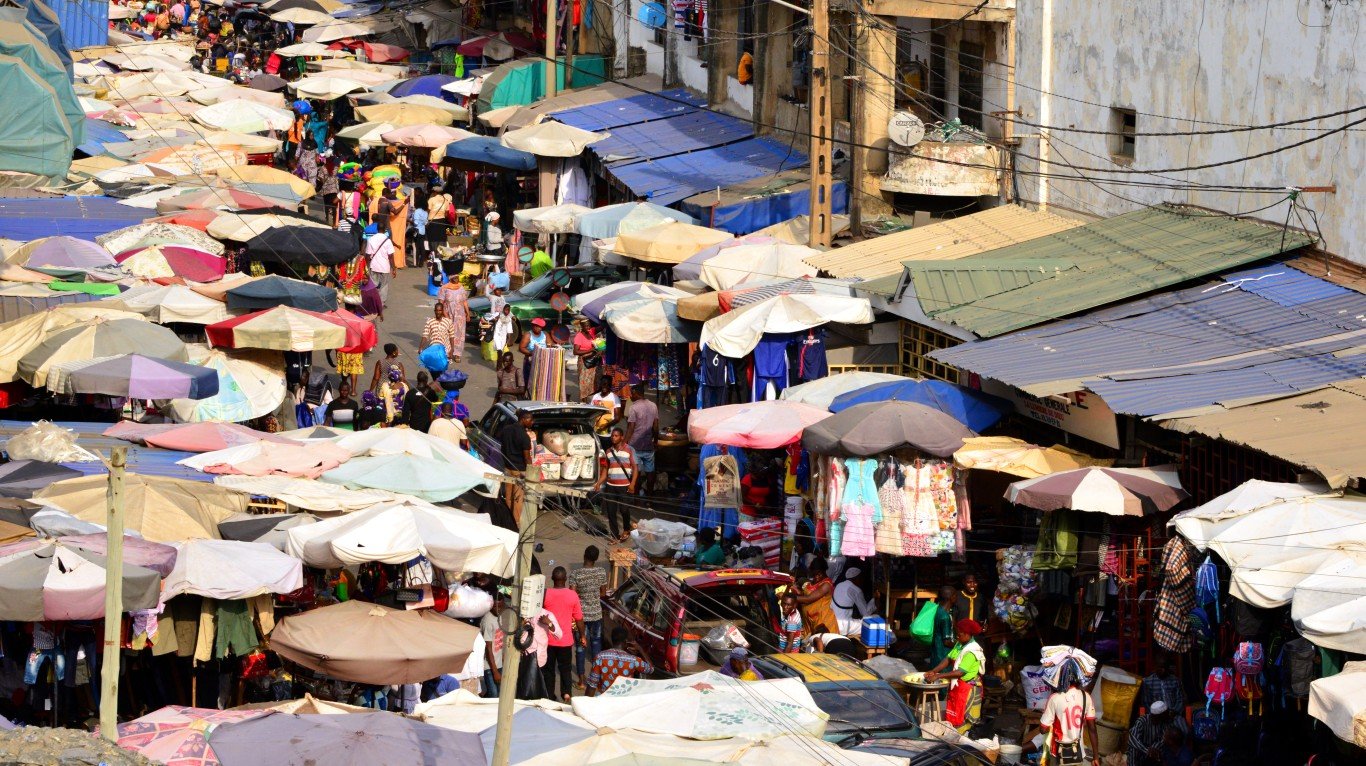
21. Togo
> GNI per capita, 2021: $2,340
> GDP, 2021: $8.41 billion (#59 lowest of 214 countries)
> Avg. life expectancy at birth, 2021: 61.6 years (#26 lowest of 194 countries)
> Population growth, 2023 est.: 2.5% (#24 highest of 237 countries)
> Population, 2021: 8,644,829
Togo, situated in West Africa, has a coastline along the Gulf of Guinea. The country faces challenges related to poverty, limited access to health care and education, and political instability. The country’s economy relies on agriculture, phosphate mining, and port services.
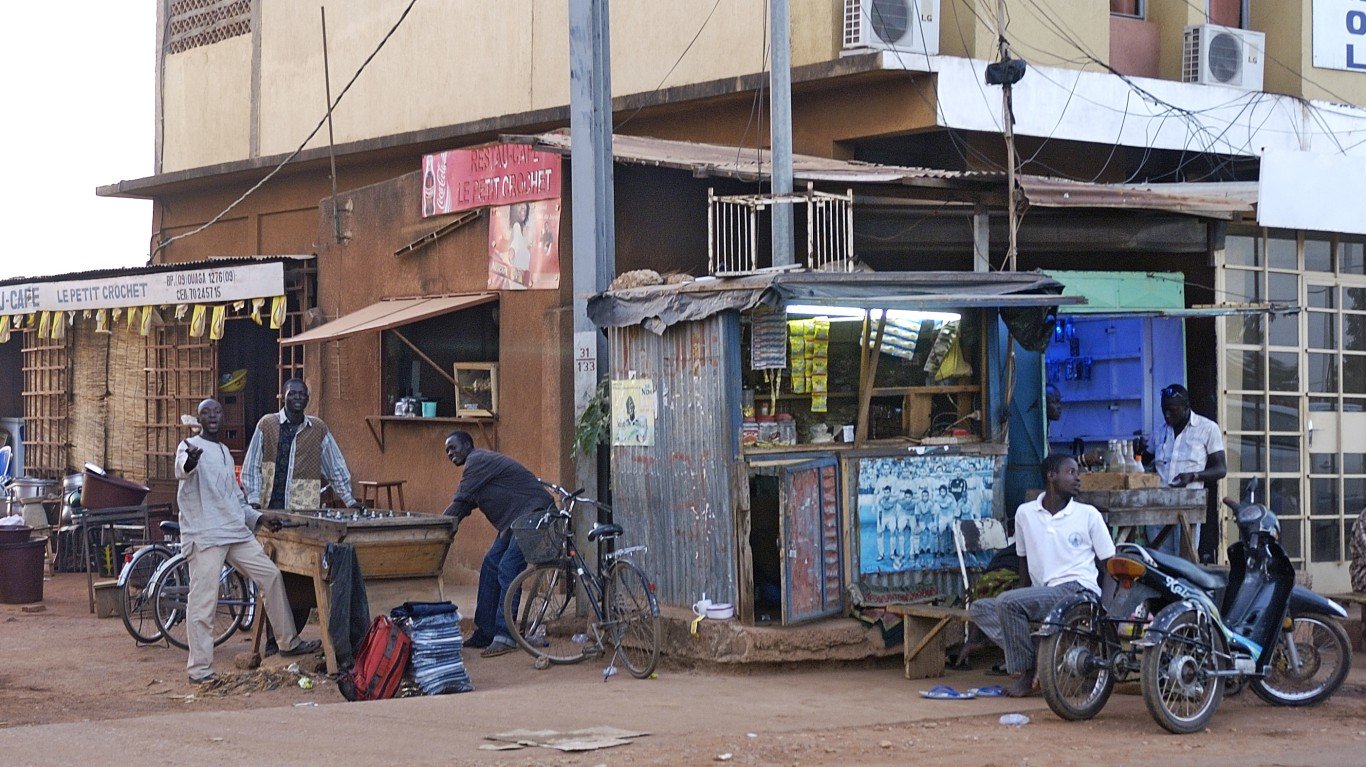
20. Burkina Faso
> GNI per capita, 2021: $2,270
> GDP, 2021: $19.74 billion (#97 lowest of 214 countries)
> Avg. life expectancy at birth, 2021: 59.3 years (#14 lowest of 194 countries)
> Population growth, 2023 est.: 2.5% (#23 highest of 237 countries)
> Population, 2021: 22,100,683
Burkina Faso is another country on the list with one of the lowest life expectancy in the world, at not even 60 years. In the United States, life expectancy is 76 years and in many affluent nations, it is higher than 80. The country, situated in West Africa, battles poverty, political instability, security concerns, and environmental challenges such as desertification in addition to obstacles in education, health care, and infrastructure development. The economy is largely based on agriculture, although gold exports have increased.
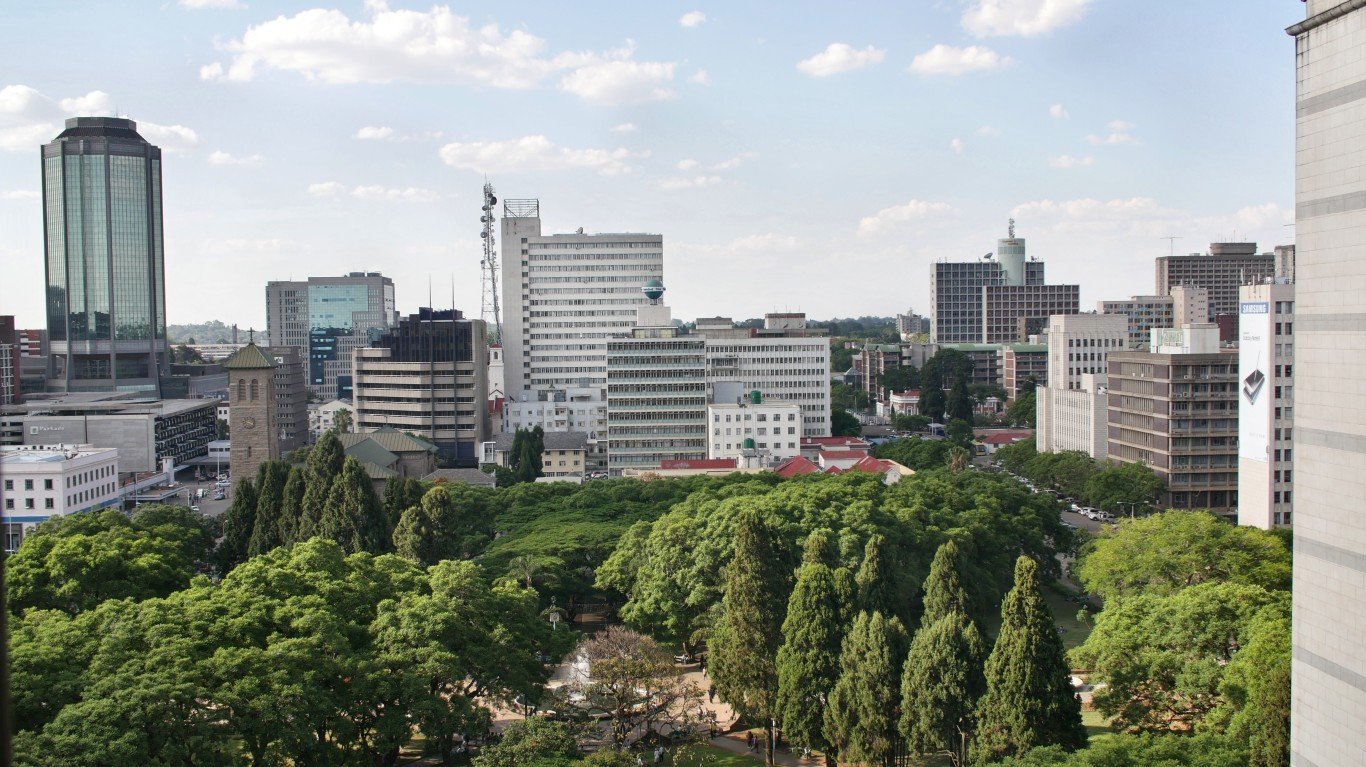
19. Zimbabwe
> GNI per capita, 2021: $2,270
> GDP, 2021: $28.37 billion (#109 lowest of 214 countries)
> Avg. life expectancy at birth, 2021: 59.3 years (#12 lowest of 194 countries)
> Population growth, 2023 est.: 2.0% (#41 highest of 237 countries)
> Population, 2021: 15,993,524
Located in Southern Africa, Zimbabwe’s economy faces challenges such as governance issues, unemployment, and limited foreign investment. It struggles with poverty, and progress in health care has stagnated in recent years. The country possesses abundant mineral and natural resources, such as platinum and diamonds, which contribute to its economic potential.
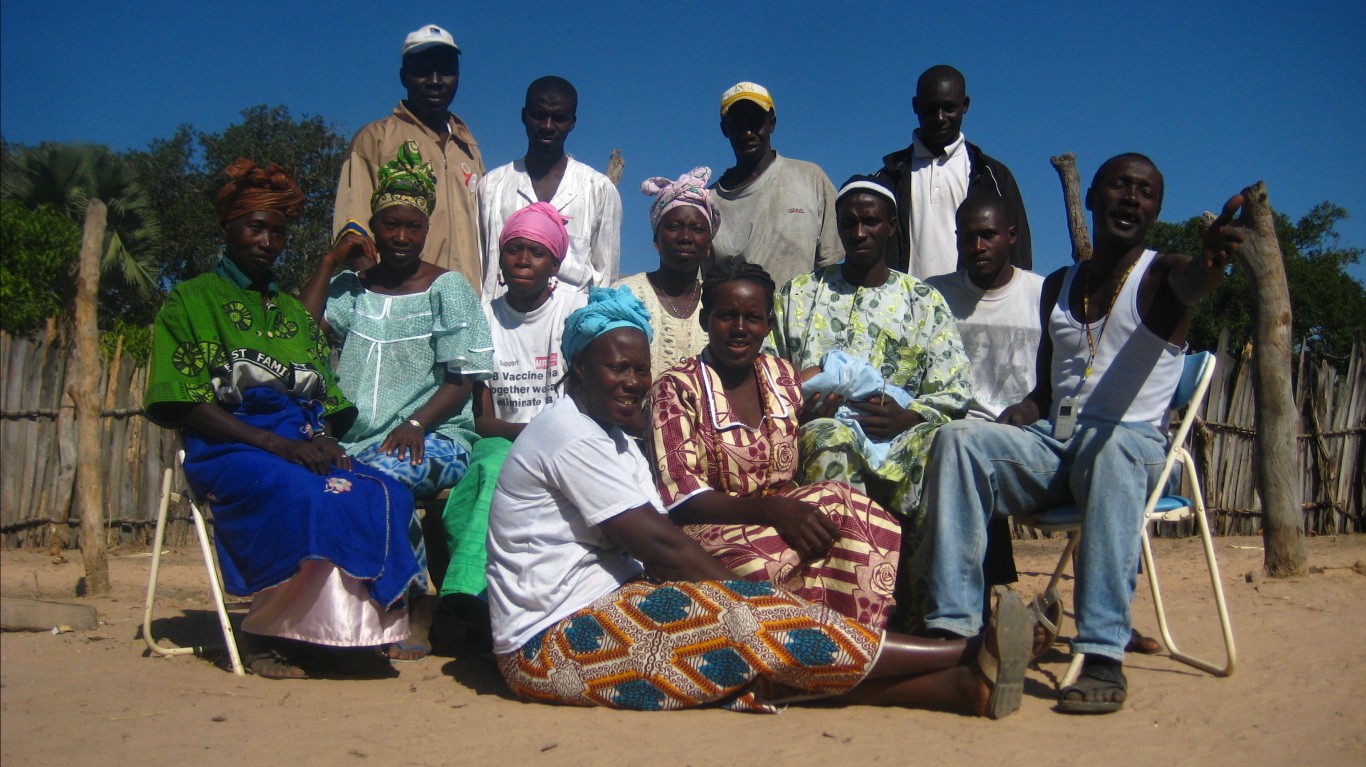
18. Gambia, The
> GNI per capita, 2021: $2,220
> GDP, 2021: $2.04 billion (#28 lowest of 214 countries)
> Avg. life expectancy at birth, 2021: 62.1 years (#30 lowest of 194 countries)
> Population growth, 2023 est.: 2.2% (#33 highest of 237 countries)
> Population, 2021: 2,639,916
The Gambia, situated in West Africa, struggles with poverty, limited access to quality education and health care, and vulnerability to climate change. It also faces challenges related to governance and human rights. The Gambia’s economy relies on agriculture, tourism, and remittances.





